Optimising the Measurement and Evaluation of Graphite Nodularity
Cast iron is a composite material in which the nonmetal graphite is distributed in a three-dimensional manner within iron. One such type is ductile cast iron, which has excellent mechanical characteristics due to the inclusion of nodules of graphite and is used in automotive parts, infrastructure, etc. The measurement and evaluation of graphite nodularity and roundness factor are vital in guaranteeing these characteristics.
This section introduces how to determine the roundness factor and graphite nodularity as well as quantitative measurement examples using our 4K digital microscope.
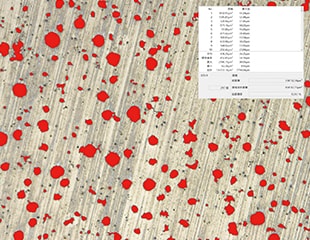
- Evaluating Graphite Nodularity and Roundness Factor
- Determining Graphite Nodularity and Roundness Factor
- Optimising the Measurement and Evaluation of Graphite Nodularity
- A 4K Digital Microscope That Optimises the Evaluation of Graphite Nodularity
Evaluating Graphite Nodularity and Roundness Factor
What is ductile cast iron?
Ductile cast iron (FCD material) is a type of cast iron created with excellent mechanical characteristics through the development of graphite nodules. It is also known as spheroidal graphite cast iron and nodular cast iron.
Ductile cast iron contains at least 0.04% Mg (magnesium) and 0.02% Ce (cerium) and 0.02% Ca (calcium). This creates mechanical characteristics such as wear resistance and tenacity (toughness) due to the crystalised nodules of graphite.
This allows ductile cast iron to be used in a wide variety of industrial applications: pipes, automotive parts, and anything required to be used water, sewage, gas.
Graphite nodularity, roundness factor, and mechanical characteristics
For ductile cast iron and other nodular graphite cast iron products, the rate of graphite distribution (graphite nodularity) and the roundness of the graphite nodules (roundness factor) greatly affect mechanical properties such as wear resistance, toughness, tensile strength, and ductility.
Therefore, it is very important to measure and evaluate the graphite nodularity and roundness factor in a quantitative manner during evaluations of ductile cast iron in order to guarantee its quality and characteristics.
Determining Graphite Nodularity and Roundness Factor
Graphite nodules do not form as perfect spheres. Therefore, to measure the graphite nodularity, it is necessary to define nearly spherical shapes as nodular graphite and to differentiate these shapes. Generally, the roundness of an object’s shape is evaluated using circularity, but with graphite nodularity, the roundness factor—which has a different concept from circularity—is used to classify the roundness according to a standard and is applied to a formula to calculate and evaluate the roundness.
Determining the roundness factor
The roundness factor (R), used to evaluate graphite nodularity, is determined by observing the graphite in the material and calculated using (L) the maximum diameter, (S) the area of the graphite, and (D) the circle using (L) for its diameter.
Dividing the area of (S) by the area of (D) gives you the roundness factor.
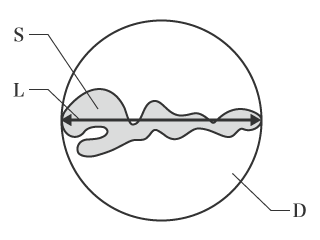
In other words, the relationship between these values is as follows.


Combining these formulas results in the following formula for determining the roundness factor.

Determining the graphite nodularity
Roundness factor classifications and size classes, according to ISO 945, are used to determine the graphite nodularity.
The following information conforms to the ISO standard, but the appropriate standard may be subject to revision. Be sure to also check the latest standard.
- Roundness factor classifications
-
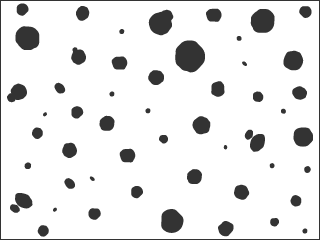 VI:Spheroidal graphite
VI:Spheroidal graphite
Roundness factor: R ≥ 0.80 -
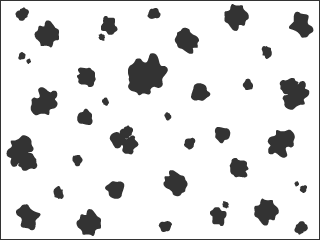 V:Slightly irregular spheroidal graphite
V:Slightly irregular spheroidal graphite
Roundness factor: 0.60 ≤ R < 0.80 -
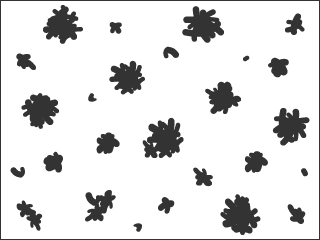 IV:Irregular spheroidal graphite
IV:Irregular spheroidal graphite
Roundness factor: 0.45 ≤ R < 0.60 -
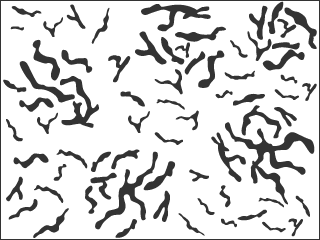 III:Vermicular (compacted) graphite
III:Vermicular (compacted) graphite
Roundness factor: 0.10 ≤ R < 0.45 -
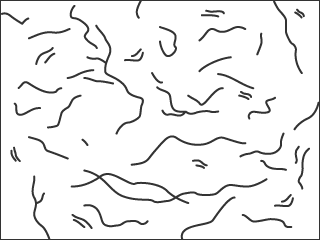 I:Lamellar (flake) graphite
I:Lamellar (flake) graphite
Roundness factor: R < 0.10
- Size class classifications
-
Class Graphite size (mm) 1 Greater than or equal to 1 2 Greater than or equal to 0.5 and less than 1 3 Greater than or equal to 0.25 and less than 0.5 4 Greater than or equal to 0.12 and less than 0.25 5 Greater than or equal to 0.06 and less than 0.12 6 Greater than or equal to 0.03 and less than 0.06 7 Greater than or equal to 0.015 and less than 0.03 8 Less than 0.015 -
According to the ISO, graphite less than 10 µm in size is not counted.
- Calculating the graphite nodularity
- To calculate the graphite nodularity, divide the area of the graphite (must be at least 10 µm and classified as V or VI from the roundness factor) by the total area of all graphite having a size of 10 µm or more.
The formula to use in determining nodularity and the values to substitute are explained below. -
 AvI:Area of the graphite at least 10µm in size and classified as VI with the roundness factorAv:Area of the graphite at least 10µm in size and classified as V with the roundness factorAall:Total area of all the graphite at least 10µm in size
AvI:Area of the graphite at least 10µm in size and classified as VI with the roundness factorAv:Area of the graphite at least 10µm in size and classified as V with the roundness factorAall:Total area of all the graphite at least 10µm in size
Optimising the Measurement and Evaluation of Graphite Nodularity
Deriving the graphite nodularity using a normal microscope requires complicated operations: classification via measurement, calculation of the roundness factor and area, and counting. Not only are these operations time and labour intensive, but they are also prone to human error and difficult to evaluate quantitatively.
Even when performing image analysis with PC software, time and effort are required to capture clear magnified images of graphite with a microscope, making the management of large amounts of image and numeric data complicated.
KEYENCE’s VHX Series digital microscope is equipped with high-resolution lenses and a 4K CMOS image sensor, enabling it to capture high-resolution images of graphite nodules having various shapes and sizes. The system can automatically calculate the area of the graphite and count the nodules from these images. The images and numeric data can be output in Excel, creating an efficient reporting process.
Automatically count graphite nodularity and measure graphite areas
The VHX Series digital microscope provides a large depth of field, allowing users to easily capture fully-focused images throughout the field of view. Hence, clear 4K images of the graphite shapes can be captured. These high-accuracy images can be used to seamlessly and automatically measure the area of the graphite and count the number of nodules with high accuracy, allowing for prompt acquisition of quantitative analysis results.
The automatic area measurement/count function allows for prompt data acquisition. Not only of the count and area of graphite nodules, but also the total area and total area ratio, as well as the maximum, minimum, average, and standard deviation of the graphite diameter.
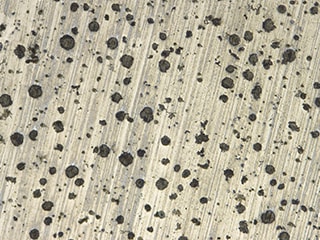
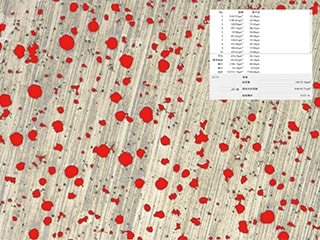
Optimising report creation for graphite nodularity
The VHX Series digital microscope can not only automatically measure graphite nodules with high accuracy but can also automatically create reports using the acquired image and numeric data.
Due to the ability to install Excel directly onto the VHX Series, all the analysis data and images can be output directly to a report using a template created by the user. The template can be designed to automatically calculate and display values according to the company's standard.
The following image illustrates how the images and analysis data can be automatically displayed in an Excel report. This ISO-compliant report example contains roundness factor classifications (type) and size classes, nodule counts, various area measurement results, and graphite nodularity.
With the automatic reporting function, users are able to greatly reduce the time and effort required to perform analyses and manage data.
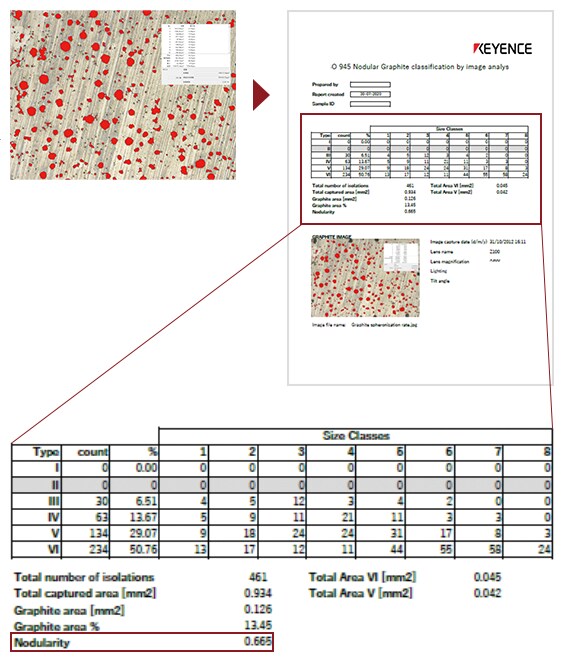
A 4K Digital Microscope That Optimises the Evaluation of Graphite Nodularity
The VHX Series digital microscope can easily acquire accurate data by capturing fully-focused, 4K images and using these images for highly accurate automatic area measurement and counting. This one device can perform all the steps required for the evaluation of graphite nodularity, including the output of reports matching industrial standards.
The quantitative measurement and evaluation of graphite nodularity were conventionally complicated processes, but the VHX Series allows you to easily perform these operations, saving you a large amount of time and effort while reducing human error and capturing accurate data.
For additional product info or inquiries, click the buttons below.


